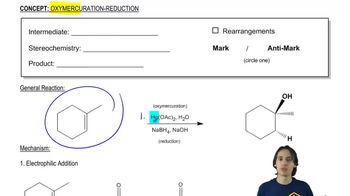How can the following compounds be synthesized, starting with a hydrocarbon that has the same number of carbons as the desired product?
c.

 Verified step by step guidance
Verified step by step guidance Verified video answer for a similar problem:
Verified video answer for a similar problem:



 3:51m
3:51mMaster Vinyl alcohols yield tautomers. with a bite sized video explanation from Johnny
Start learning